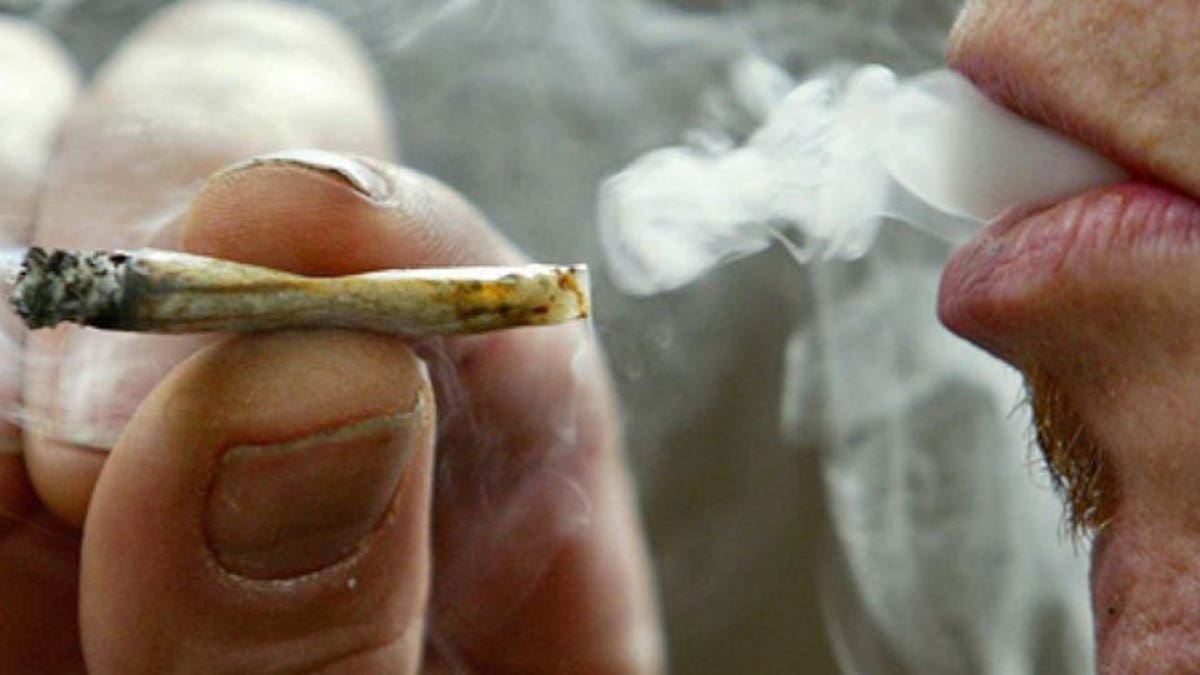
Secondhand marijuana smoke may pose a similar health risk to that of tobacco, suggests new research presented at the American Heart Association's Scientific Sessions 2014 in Chicago.
In the study, lab rats’ blood vessel function declined by 70 percent after 30 minutes of exposure to secondhand marijuana smoke. When researchers removed tetrahydrocannabinol (THC)— the compound in marijuana that causes intoxication— from the smoke, the animals’ blood vessel function was still impaired.
“I think that a lot of people in the general public look at it this way: I don’t want to breathe in cigarette smoke, but marijuana doesn’t have nicotine— it’s natural. It’s medicinal,” senior author Matthew L. Springer, associate professor of medicine at the University of California, San Francisco’s cardiology division, told FoxNews.com.
Springer said he thought to explore the potential effects of secondhand marijuana smoke a few years ago while attending a Paul McCartney concert. People in the stands at AT&T Park, where the San Francisco Giants play, began lighting up, and Springer said he was surprised by the smell.
“A cloud of smoke was hovering over the field, and Paul McCartney was on stage and sniffed the air, and joked, ‘There’s something in the air, and it must be San Francisco,’” Springer said.
Despite new legislation expanding the legality of recreational marijuana in Colorado, Washington State, and most recently in Oregon and Washington D.C., no study has previously explored how secondhand marijuana impacts blood vessel function— much of the research has been focused on how marijuana affects the lungs.
One side effect of marijuana smoking is poor blood vessel function, which can lead to an increased risk of atherosclerosis, which causes plaque build-up in the arteries, restricts blood flow and could lead to a heart attack, according to the American Heart Association. Smoking cigarettes can also increase the risk of atherosclerosis.
To analyze marijuana smoke’s impact on blood vessel function, the study authors reproduced marijuana smoke with a machine and placed rats in an insulated room. Prior to the exposure, as well as 10 and 40 minutes afterward, researchers measured the ability of the rats’ blood vessels to grow in diameter. Using a high-resolution micro-ultrasound, they measured blood vessels prior to blocking blood flow in the rats’ legs for a baseline reading, and then again after releasing the restriction and letting the blood rush.
“In humans, you can measure that and take it as an indication of vascular health,” Springer said, pointing out that humans’ blood vessel function is usually measured by restricting blood flow in the arm. “If a vessel grew by 10 percent during the flow-mediated dilation (FMD) of the artery, that person was considered to have a well-functioning blood vessel.”
As exposure time increased, the rats’ FMD levels decreased, indicating reduced function. Normal vessel function had not returned 40 minutes after exposure to the marijuana smoke. In previous research of secondhand tobacco smoke, blood vessel function had returned in that amount of time.
That blood vessels were still impaired after exposure to THC-free smoke suggests that the compound isn’t the cause for reduced function, the researchers noted.
“Everything that we’re showing in this study isn’t an effect of THC,” Springer said, “so if someone eats marijuana, [blood vessel impairment] isn’t necessarily going to happen.”
Springer said their findings aren’t surprising when one considers the physical and chemical similarities between tobacco and marijuana smoke— when tobacco and marijuana plants burn, an estimated 4,000 to 7,000 chemicals are released.
Next, researchers plan to expose rats to cigarette smoke repeatedly to see if there’s a long-term effect on their blood vessel function. Based on previous findings, Springer said the results of cigarette smoke would likely be consistent with that of marijuana smoke.
As laws permitting recreational use of marijuana are passed across the U.S., Springer said his team’s preliminary findings have the potential to help legislators set rules on where people are and aren’t allowed to smoke, just like tobacco.
“From my standpoint, I’ve always been concerned about bystanders who don’t want to inhale smoke,” Springer said. “I think that the smokers should know what they’re doing to the bystanders, and the bystanders should be aware of what they’re exposing themselves to. If they are inhaling marijuana smoke, they are probably being affected in a similar way to tobacco smoke.”
Springer pointed out that the researchers modeled two different levels of marijuana smoke from previous studies on tobacco smoke exposure. The effect on blood vessel function was the same at both levels.
“Very little is known about ambient levels of marijuana. All we could do was [provide] identical levels of tobacco smoke.” Based on their findings, Springer advised, “Whatever level you would not want to expose yourself to tobacco smoke, don’t expose yourself to marijuana smoke. But we can’t give you a magic number saying, ‘This is bad and this is good.’”
